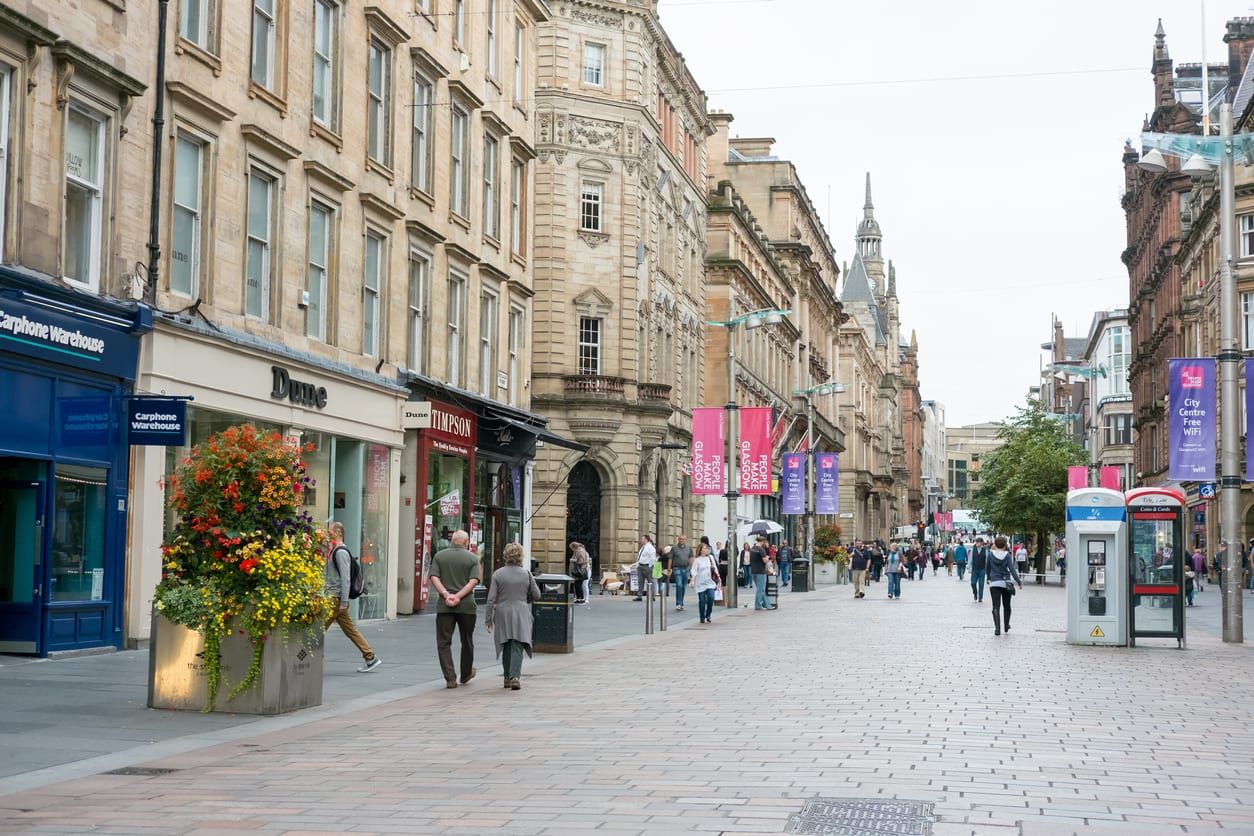
You’ve probably heard it countless times—online shopping will soon take the place of brick and mortar shopping forever. According to some news outlets, it won’t be long until the high street is dead, with the closure of stores like Toys R Us and Maplin sending the media into a tailspin. But whilst these assertions are understandable, the notion that brick and mortar stores are finished couldn’t be further from the truth. Not only is high street shopping alive and kicking, but online retailers are also increasingly opening physical stores. A 2017 report from retail platform Hero found that 67% of leading e-commerce brands had opened physical stores between 2014 and 2017.
Look at Amazon. Known as the king of online retail, the e-commerce giant generated headlines around the world after unveiling its inaugural Amazon Go store in January 2018. Filling a gap in the market for checkout-free retail shopping, their uber-modern stores could herald a new dawn for brick and mortar shopping. It’s not just the big retail players that are getting in on the act either—for instance, online purse and bag brand Mon Purse opened a physical store in May 2017. Designed in collaboration with retail design agency Prop Studios, the brand now has a permanent spot in Selfridges’ famous Oxford Street store. In this piece, we’ll look at exactly why online brands, both big and small, are taking this measure.
Physical stores enhance the shopping experience
Whilst consumers can read about, see photos of and read reviews about a brand’s products online, they can’t get a true feel for them when browsing a website. Although online shopping has threatened to overtake high street shopping in recent times, research demonstrates that consumers still prefer physical shopping overall. A study by Vista Retail Support showed that 81% of UK consumers see the physical store as crucial to the shopping experience, with 70% of those surveyed sayingthey prefer the full experience of physically browsing items. This allows them to see, touch and test products, enabling them to dismiss any doubts about them, and convince themselves any purchases are 100% right.
It’s no surprise that physical shopping is so popular when you consider the innovations we are currently seeing from retailers. For instance, the rise of experiential shopping has made physical shopping more fun than ever, whilst technology like AR and artificial intelligence has made it even more convenient, enhancing the customer experience in new and exciting ways.
Physical stores are a great way of conducting market research
Physical stores also represent an invaluable opportunity to carry out market research. Whilst data collected from e-commerce stores can undoubtedly be useful, so much can be learnt from observing and interacting with shoppers in the flesh. As Sucharita Mulpuru, a senior analyst with Forrester Research, told USA Today: “If you look at it from a market research standpoint, [a store] pays for itself…the amount of market research you gain just by observing people, it’s the equivalent of 100 focus groups.” It’s no wonder so many online retailers are opening up physical stores.
A case in point is that of American fashion retailer ModCloth. An exclusively online company throughout its 13-year history prior to 2015, it then decided to launch its first brick and mortar store. Speaking about what the move taught them about their customer base, Matt Kaness, president and CEO at ModCloth said in the same USA Today piece: “We discovered small things, the details our customers love”, such as linings in dresses. This could then inform their subsequent product strategy, where they could better cater to their audience’s preferences.
Physical stores raise brand awareness
A decision to visit a retail website is usually made in a split second. Retailers then have the difficult task of getting visitors to actually stay on the site, let alone add items to their shopping cart, proceed to the checkout and go through with a purchase. Conversely, physical stores can use alluring window displays and striking signage to draw in passers-by, where they can then really engage with the brand.
Once individuals are inside a store, expert staff can interact with shoppers to learn about their requirements and provide bespoke solutions. Retailers therefore have much more time to capture and hold a person’s attention, as opposed to an online browser who can instantaneously switch to a different site. In fact, a study by Timetrade found that 90% of consumers are more inclined to buy products when being helped by a knowledgeable staff member. By raising awareness around the brand, physical stores can help individuals become immersed in brand culture, creating an affinity that can blossom into a long-standing relationship with the retailer.
Despite the perception that the physical store is dead and buried, more online brands are opening physical stores, and it is easy to see why. With benefits like enhancing customer experiences, conducting marketing research and raising brand awareness, don’t be surprised to see even more online brands following suit in the future.